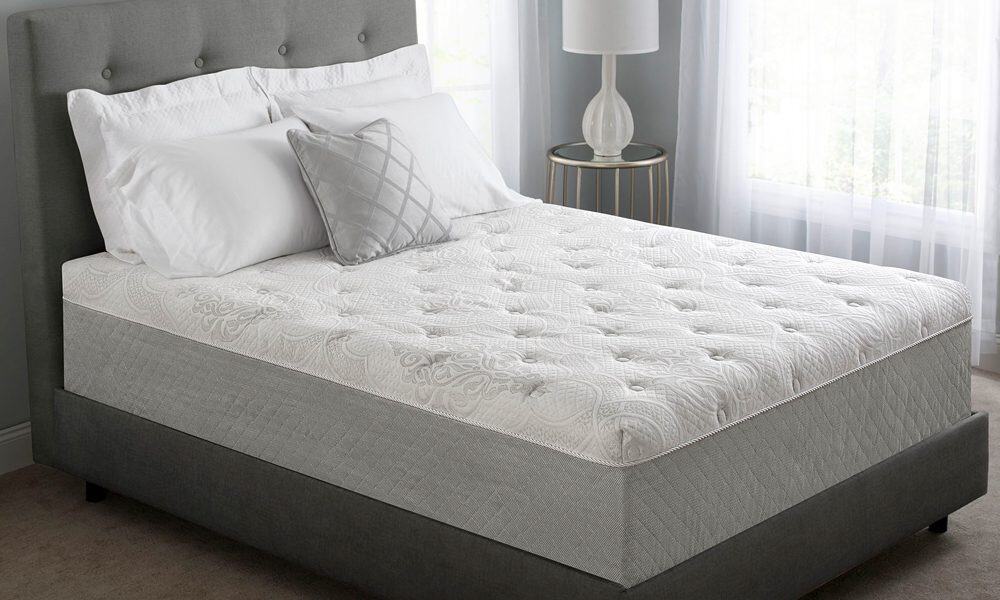Are you tired of the outdated look of your kitchen cabinets? Instead of completely replacing them, consider kitchen cabinet refacing as a cost-effective and stylish alternative. This process involves removing the old cabinet doors and drawer fronts, and replacing them with new ones. You can also opt for a cabinet door replacement if you want a completely different style. Here's a step-by-step guide on how to redo your kitchen cabinets for a new and improved look. Step 1: Assess Your Current Cabinets The first step in kitchen cabinet refacing is to assess the current state of your cabinets. Are they in good condition, or do they need some repairs? If they are still structurally sound, then refacing is a viable option. However, if the frames or shelves are damaged, it might be better to opt for a full replacement. Step 2: Choose a Refacing Method There are two main types of kitchen cabinet refacing: cabinet door replacement and laminate refacing. With the former, you'll be replacing just the doors and drawer fronts, while with the latter, you'll be covering the existing surfaces with a thin layer of laminate. Consider your budget and the overall look you want to achieve before deciding which method is best for you. Step 3: Pick a Style and Material Once you've chosen your refacing method, it's time to choose the new style and material for your cabinet doors. You can go for a contemporary and sleek look with high-gloss laminates, or opt for a traditional and warm feel with wood veneer. Don't be afraid to mix and match materials for a unique look. Step 4: Remove Old Doors and Clean Surfaces Before starting the refacing process, make sure to remove all the old doors and drawer fronts. Use a mild soap and water solution to clean the surfaces and remove any dirt or grime. This will ensure that the new materials adhere properly. Step 5: Install New Doors and Coverings Now it's time to install the new doors and coverings. Measure and cut them according to the dimensions of your existing cabinets. For cabinet door replacement, make sure to properly align and secure the hinges. For laminate refacing, carefully apply the laminate sheets, making sure to smooth out any air bubbles or wrinkles. Step 6: Add Finishing Touches After refacing your kitchen cabinets, you can add some finishing touches to really enhance the overall look. This can include new hardware, such as knobs or handles, crown molding for a more polished look, or even task lighting under the cabinets for added functionality. With these simple steps, you can easily transform the look of your kitchen cabinets without having to break the bank. Remember to choose materials and styles that complement the overall design of your kitchen, and have fun with the process!Kitchen Cabinet Refacing: How to Redo Your Kitchen Cabinets for Improvement
Open floor plans have become increasingly popular in modern homes, and it's no surprise why. They offer a spacious and airy feel, allowing for easier flow and communication between rooms. However, an open floor plan also has its drawbacks. Let's explore the pros and cons of this kitchen design trend and see if it's the right choice for your home. Pros: 1. Increased natural light With fewer walls, natural light can easily flow throughout the space, making it feel brighter and more inviting. This can also help save energy by reducing the need for artificial lighting. 2. Better communication and connection In an open floor plan, it's easier to communicate with family members or guests while in different areas of the home. This can also help create a sense of togetherness and connectedness. 3. Space-saving design Without walls and doorways taking up space, an open floor plan can make a home appear larger than it actually is. This can be beneficial for smaller homes or apartments. Cons: 1. Limited privacy With fewer barriers, an open floor plan can lack privacy, especially in areas like the kitchen where cooking smells and noise can easily travel to other parts of the house. 2. Lack of defined spaces Without walls to separate rooms, it can be challenging to have defined spaces for different activities. This can lead to a noisy and distracting environment. 3. Less storage In an open floor plan, storage options are typically limited to cabinets and shelves. This may not be enough for families with a lot of belongings. Ultimately, whether an open floor plan is right for you depends on your lifestyle and preferences. Consider the pros and cons before deciding if this kitchen design trend is a good fit for your home.Kitchen Design: Considering the Pros and Cons of an Open Floor Plan
A kitchen remodel is a major project, and proper planning is crucial to its success. Here's a guide to help you through the planning process and ensure a smooth and successful renovation. 1. Set a Budget The first step in any home renovation is to set a budget. This will help guide your decisions and ensure that you don't overspend. Consider factors such as labor and materials, as well as any unexpected costs that may arise. 2. Research Design Ideas Before starting your kitchen remodel, take some time to research and gather design ideas. Look at home improvement magazines, websites, and social media platforms for inspiration. Consider the overall style and functionality you want to achieve. 3. Create a Plan and Timeline Draft a layout and design plan for your new kitchen. This should include the placement of appliances, cabinets, and other important features. Create a timeline for your renovation, allowing for extra time in case of delays. 4. Choose Quality Materials Investing in quality materials will ensure a long-lasting and durable kitchen. This can also save you money in the long run by avoiding the need for frequent repairs or replacements. 5. Consider Universal Design Elements If you plan on living in your home for a long time, consider incorporating universal design elements in your kitchen remodel. This includes features that make the space more accessible and user-friendly for people of all ages and abilities. 6. Hire Professionals While DIY projects can be fun and cost-effective, a kitchen remodel is a complex and time-consuming project that is best left to professionals. Hiring experienced contractors can save you time, stress, and ensure a high-quality end result. By following these tips and guidelines, you can ensure a successful kitchen remodel that meets your budget, style, and functional needs. Remember to be flexible and patient, as unexpected challenges may arise during the renovation process.Kitchen Remodel Planning Guide: Design Ideas and Tips for a Successful Renovation
If your kitchen is feeling outdated and in need of a refresh, here are some kitchen design ideas to help give it a modern and updated look. 1. Use a Neutral Color Palette One of the easiest ways to give your kitchen a modern feel is by using neutral colors. Shades like white, gray, and beige create a clean and sleek look that is timeless and versatile. 2. Incorporate Metallic Accents Adding metallic accents to your kitchen, such as stainless steel appliances or brass hardware, can instantly elevate its overall look and feel. These accents also add a touch of elegance and sophistication. 3. Include High-Tech Features A modern kitchen is not just about aesthetics, but also functionality. Consider incorporating high-tech features, such as smart appliances or a voice-controlled assistant, to make your kitchen truly cutting-edge. 4. Opt for Minimalist Design Keeping your kitchen design clean and clutter-free is the key to achieving a modern look. Minimalist design features simple and streamlined elements that create a sense of calm and order in the space. 5. Incorporate Natural Elements To add warmth and balance to your modern kitchen, consider incorporating natural elements. This can include wood accents, stone countertops, or even a small indoor herb garden for a touch of greenery. By incorporating these design ideas, you can easily modernize your kitchen and create a space that is both stylish and functional. Don't be afraid to experiment and add your own personal touch for a truly unique and modern kitchen.How to Modernize Your Kitchen: Design Ideas for an Updated Look
Having a small kitchen doesn't mean you have to sacrifice style and functionality. Here are some design tips to help you make the most out of a limited space. 1. Use Vertical Storage When dealing with a small kitchen, maximizing vertical space is crucial. Consider installing floating shelves or stacked cabinets to add extra storage without taking up valuable square footage. 2. Utilize Multi-Functional Furniture Invest in multi-functional furniture pieces to make the most out of a small kitchen. For example, a foldable dining table or rolling kitchen island can serve multiple purposes and be stored away when not in use. 3. Opt for Light Colors In a small kitchen, light colors are your best friend. They reflect light and create an illusion of more space. Consider using light tones for the walls, cabinets, and countertops. 4. Utilize Every Nook and Cranny When it comes to small kitchen design, every inch counts. Don't let any space go to waste, and utilize every nook and cranny for storage. This can include cabinets with pull-out shelves, over-the-door organizers, and hanging racks. 5. Keep Clutter to a Minimum In a small kitchen, clutter can quickly make the space feel overcrowded and chaotic. Practice organization and declutter regularly to maintain a tidy and functional space. By following these tips, you can maximize space and functionality in your small kitchen without compromising on style. Remember to get creative and think outside the box for unique storage solutions.Small Kitchen Design: Maximizing Space and Functionality in a Limited Area
Remodeling your kitchen doesn't have to cost a fortune. Here are some tips to help you design a stylish and functional kitchen on a budget. 1. Keep the Layout As-Is Changing the layout of your kitchen, such as moving plumbing or electrical, can quickly add up in cost. If your current layout is functional, consider keeping it as-is and focus on cosmetic changes instead. 2. Update the Cabinets Instead of Replacing Them Replacing cabinets can be a major expense. Instead, consider painting or refacing them for a fresh and updated look. You can also add new hardware for a modern touch. 3. Shop for Discounted Materials Consider shopping for discounted materials from home improvement stores or online outlets. You can find great deals on flooring, countertops, and even appliances that may be discontinued or on sale. 4. Reuse and Recycle Don't be afraid to give old materials a second life in your new kitchen. For example, you can sand and repaint old cabinets, or use reclaimed wood for a budget-friendly backsplash.Budget Kitchen Renovation: Tips for Designing a Stylish Kitchen on a Budget
Creating a More Functional Kitchen: The Importance of Reforming Kitchen Design

In today's busy lifestyle, the kitchen has become more than just a space for cooking and preparing meals. It has evolved into a hub for socializing, working, and relaxing. As such, outdated and inefficient kitchen designs can hinder not only our daily routines but also our overall quality of life. This is why it is crucial to reform kitchen design and transform it into a functional and beautiful space that meets our modern needs.
The Problems with Traditional Kitchen Designs

Traditional kitchen designs are typically characterized by a work triangle layout, with the sink, refrigerator, and stove placed at the three points of the triangle. While this layout may seem logical and efficient, it often results in wasted space and an inefficient use of the kitchen. Kitchen reform entails breaking away from this traditional layout and creating a design that is tailored to the specific needs and preferences of the homeowner.
In addition, traditional kitchen designs often lack proper storage and organization, leading to cluttered countertops and difficulty in finding essential items. This can not only affect the functionality of the kitchen but also make it appear chaotic and uninviting. As such, reforming kitchen design should also address storage solutions to maximize space and keep the kitchen organized and tidy.
The Benefits of Kitchen Reform

Kitchen reform is not just about aesthetics; it can significantly improve the functionality and efficiency of the space. By customizing the design to fit the specific needs and lifestyle of the homeowner, the kitchen can become a space that enhances daily routines and makes tasks more manageable.
With a modern and efficient kitchen design, cooking and preparing meals can become less of a chore and more of a pleasure. The placement of appliances and workspaces can be optimized for convenience, allowing for a smooth workflow. This is especially beneficial for individuals who love to cook and spend a lot of time in the kitchen.
Furthermore, a well-designed kitchen can also elevate the aesthetic appeal of the entire house. With the right choice of materials, colors, and accessories, kitchen reform can create a cohesive and stylish look that adds value to the property.
In Conclusion

In conclusion, the kitchen is the heart of the home, and its design has a significant impact on our daily lives. Kitchen reform is essential in creating a more functional and enjoyable space that meets our modern needs. By breaking away from traditional layouts and customizing the design to fit our lifestyle, we can significantly improve the efficiency and aesthetic appeal of our kitchens. So why settle for an outdated and inefficient kitchen design when you can have a space that meets all your needs and enhances your daily routines?

























































